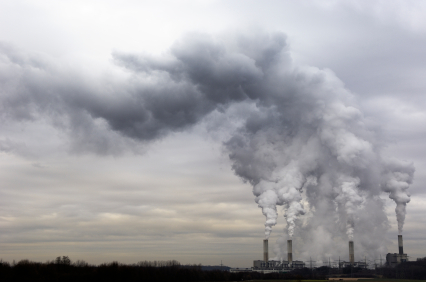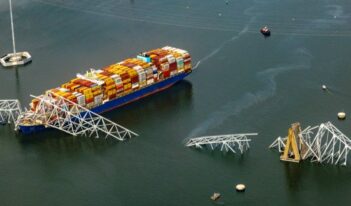
Studies show that the environmental and health benefits of the EPA’s proposed rule would significantly outweigh its compliance costs.
The U.S. Environmental Protection Agency (EPA) is developing new rules to regulate the interstate transport of sulfur dioxide (SO2) and nitrogen oxides (NOX) emitted from electric power generation facilities. EPA’s regulatory proposal – the Clean Air Transport Rule (Transport Rule) – is designed to help communities that are generally downwind of major emissions sources comply with air quality standards and, in the process, provide health and environmental benefits to upwind and downwind communities alike. The Transport Rule is one in a series of rules being developed by EPA that will affect the electric power sector, including regulation of GHG emissions, hazardous air pollutants, cooling water intake structures, and waste disposal for coal combustion byproducts.
As EPA undertakes this series of rulemakings, we believe the public interest requires the Agency to carefully assess decisions about the stringency, design, and timing of proposed rules in a holistic framework that appropriately accounts for the regulation’s likely effects. This framework is grounded in “benefit-cost analysis,” a key element of regulatory impact assessments required through Executive Orders spanning the past five Presidential administrations, and is complemented by distributional assessment of the economic impacts to regions, sectors and populations. Using this lens, six important points about the Transport Rule emerge:
First, existing studies providing estimates of the Transport Rule’s benefits and costs consistently find that benefits outweigh costs on a national basis, often by a wide margin. EPA estimates that benefits of the Transport Rule are 25 to 130 times greater than the corresponding estimated costs. The benefits come in many forms, with the largest coming from reduced premature mortality. Reduced morbidity, especially lower incidence of respiratory and heart disease, improved visibility, enhanced agricultural and forestry yields, environmental amenities, and improved ecosystem services would also be achieved. The billions of dollars in savings expected from reduced health care expenditures and improved worker productivity alone may more than offset the Transport Rule’s compliance costs.
Second, the net positive benefits of the Transport Rule estimated by these studies are robust to changes in certain key modeling assumptions. Differences in key assumptions used to estimate the benefits of reduced premature mortality largely drive the wide variation in estimated benefits of the Transport Rule, which accounts for the vast majority (80 to 96 percent) of total estimated benefits. These studies’ findings of positive net benefits continue to hold with changes to several key modeling assumptions.
Third, actions taken to achieve regulatory benefits also create social costs. The proposed timing of the Transport Rule’s requirements appears unlikely, however, to raise the national costs of implementation significantly. Given the anticipated quantity of required pollution control retrofits, and the limited quantity of coal-fired capacity expected to retire under Transport Rule, and excess capacity in many regions, we should be able to easily avoid substantial transition costs.
Fourth, expanded supplies of low-cost natural gas and currently underutilized labor supply to help install pollution control equipment may well lower the social cost of the Transport Rule and mitigate any impact on electric rates. Although coal prices have risen over the past decade, technological advances in natural gas extraction have greatly expanded economically viable supplies of unconventional sources. By making natural gas-fired generation more competitive with coal-fired generation, these price trends can not only lower the cost of reducing emissions through fuel substitution, but also contribute independently to coal-fired plant retirement decisions along with other market factors, such as EPA regulation.
Similarly, in difficult economic times, such as today’s, when unemployment is high, some workers used to meet new regulatory requirements may otherwise have been unemployed or underemployed. Thus, using their labor to implement the regulation imposes a lower social cost. Consequently, implementing the Transport Rule during periods of high unemployment may lower the Rule’s social costs.
Fifth, “upwind” states, in addition to “downwind” states, will receive substantial benefits from the Transport Rule. Although designed to address “upwind” states’ power plant pollution impacts on “downwind” states, this characterization may misrepresent the geographic distribution of the Transport Rule’s benefits and costs. While the Rule’s economic costs most likely will be borne in upwind states relying heavily on coal-fired power, because of reduced emissions, these states also would likely receive substantial benefits from the Rule, largely in the form of improved health outcomes. The benefits will include reductions in health care expenditures and improved worker productivity, as well as improvements in well-being.
Sixth, employment will likely rise in the short run as a consequence of the Transport Rule, due largely to investment in new pollution controls. In the short run, the installation and operation of new pollution control equipment and construction of new generation to replace retired coal-fired generation under the Transport Rule are likely to outweigh any reduced employment at retiring coal-fired facilities. In the long run, given the many adjustments within and outside the electric sector, the Transport Rule’s impact on net employment could be positive or negative.
In sum, while imposing incremental costs to achieve reductions in SO2 and NOX emissions, the Transport Rule would produce significant benefits in terms of improved health outcomes, and better environmental amenities and services, which studies estimate significantly outweigh the costs.
This analysis on The Regulatory Review is adapted from the authors’ recent study, A Guide to Economic and Policy Analysis of EPA’s Transport Rule.





